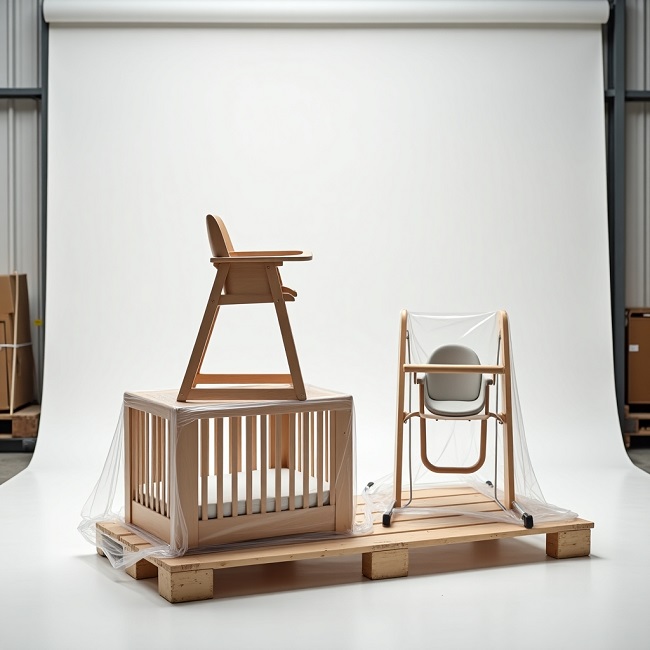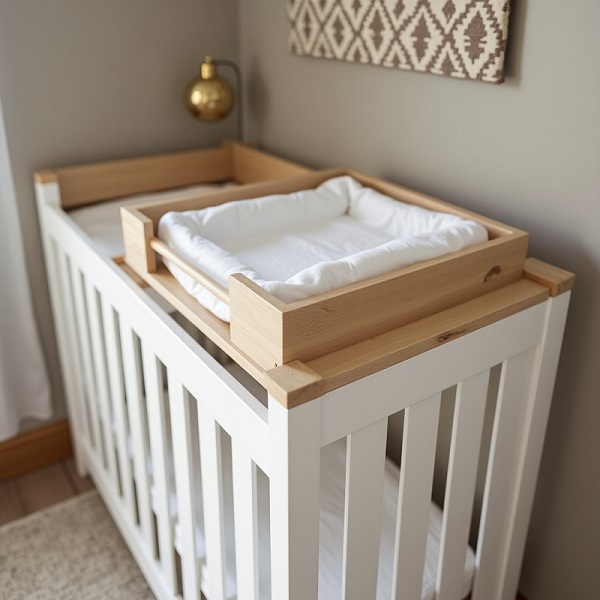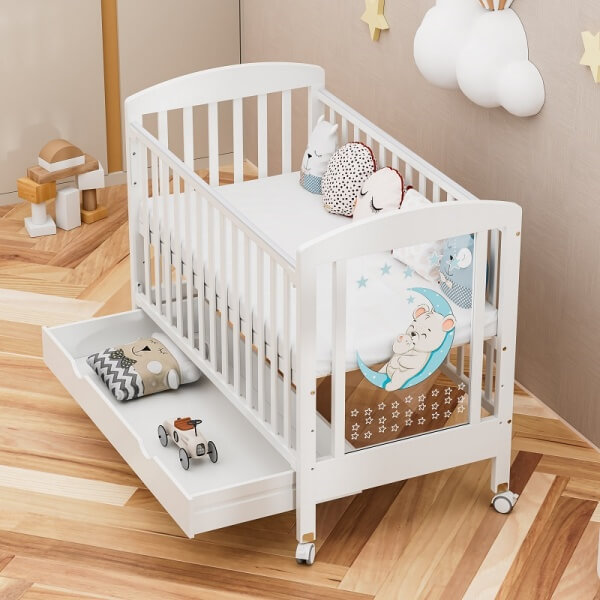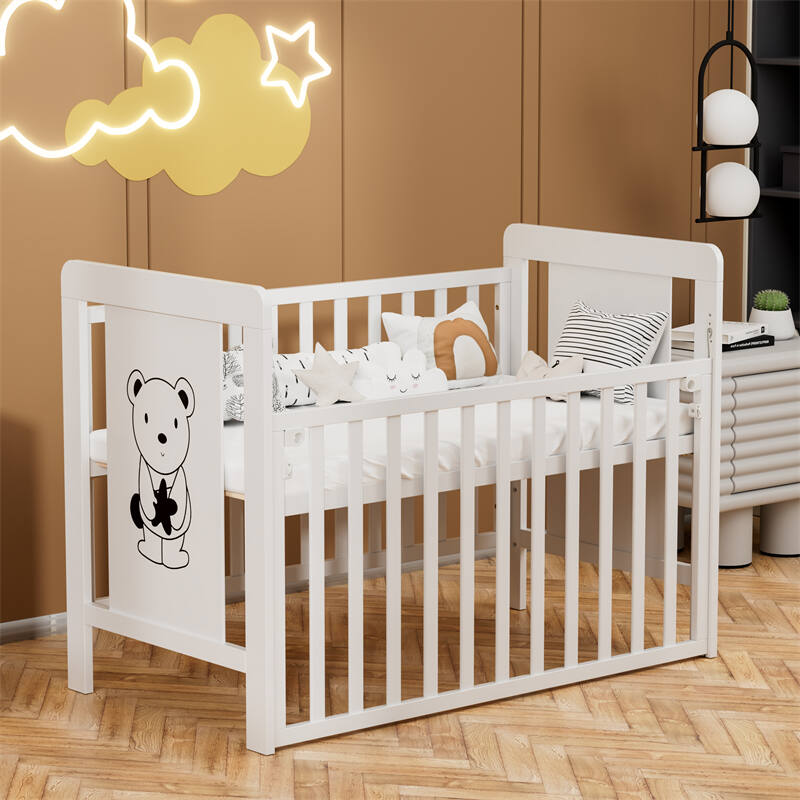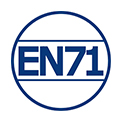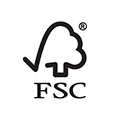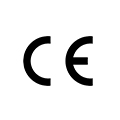At the beginning of your parenting journey, you quickly learn that the market is full of baby products that promise to make life easier. Among all these gadgets and gear, the baby Bouncer certainly tops the list of a new parent’s “lifesavers.” Yet, the huge selection available also brings much stress and anxiety. Do you need a motorized one? A manual one? What is the difference between a rocker and a bouncer? More importantly, is it safe for your baby?
Our goal is simple: to give you the ultimate guide that is trusted, easy to understand, and will give you peace of mind. This article will break down how a เปลโยกเด็ก works, its limits, and how to choose the right one for your family.
What Is a Baby Bouncer and Why Do Parents Love Them?
The Core Function of a Bouncer
เอ เปลโยกเด็ก (sometimes called an infant seat) is a light, low-to-the-ground infant seat. It is mainly made of a strong frame and a soft fabric seat. Unlike other electric devices, the bouncer is special because of its bouncing action. This movement comes from the baby’s own kicks, wiggles, or a parent’s gentle push.
It gives a mild, steady, and rhythmic movement that copies the feeling of being in the womb, helping to soothe the baby. It gives a safe, soft, and temporary resting spot, allowing parents to free up their hands for a short time to do chores, cook, or shower.
Bouncer vs. Rocker vs. Swing: Knowing the Difference
Many new parents are confused between a bouncer, a rocker, and an electric swing. They may look similar, but their core way of working and their best uses are very different.
| คุณสมบัติ | คนเฝ้าประตู | Rocker | แกว่ง |
| Movement | Vertical Bouncing | Horizontal Rocking | Automatic Gliding/Swinging |
| แหล่งพลังงาน | Baby Motion/Manual | Mostly Manual, sometimes Electric | Battery/Plug-in |
| รอยเท้า | Smallest, highly portable | Medium, usually sturdier | Largest, often bulky |
| Typical Price | Low to Medium | ปานกลาง | Medium to High |
| Best Use Case | Temporary rest, quick soothing | Pre-sleep calming, quiet time | Continuous soothing, hands-free time |
What Ages Can Use a Baby Bouncer?
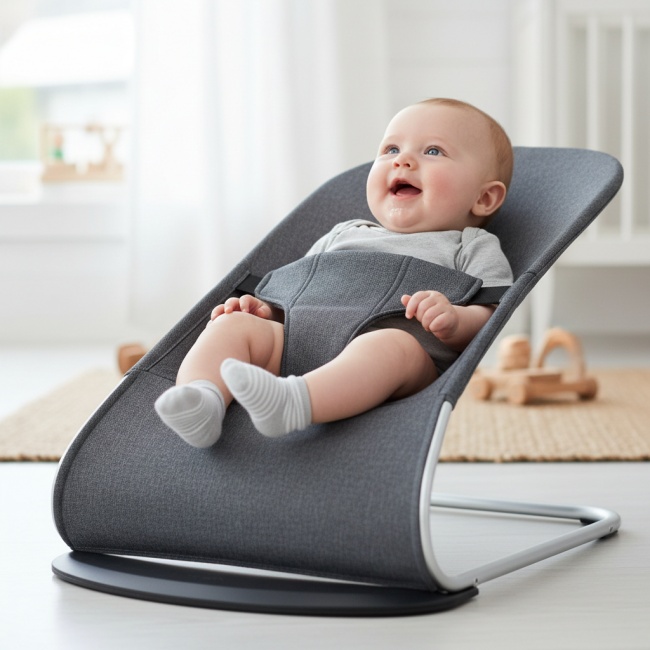
For using a เปลโยกเด็ก, the most important safety rule is not the baby’s age, but their physical growth milestones, especially head control. Most bouncers are made for newborns because they usually have soft padding and support to hold the head and neck, which are not yet fully developed.
In the first few weeks and months, a newborn’s neck muscles are very weak. If your baby’s head is flopping forward or sideways in the bouncer, it means they are not ready to use it. A bouncer is only safe when the baby can control their head by themselves or for a short time with help.
The real risk is in the sitting angle, not the device itself. Newborns lack muscle strength, and if they sit too upright, their head can flop down, leading to a choking risk. For newborns (especially 0–8 weeks old), you should choose a bouncer that is adjustable and provides near-flat support (meaning an angle less than 45 degrees).
When to Transition Out: Weight and Mobility
There are two clear signs to stop, and you must stop right away if either one is met:
Reaching the Maximum Weight Limit: Exceeding the maximum weight (usually between 20 to 30 pounds) can make the bouncer’s structure fail and cause a tipping risk.
The Baby Starts to Move: This is the most important safety warning. Once the baby begins to try to roll over, sit up, or crawl on hands and knees, they have the ability to push the bouncer over or climb out with strong movements.
How Long Can a Baby Stay in a Bouncer?
The Golden Rule: 20-30 Minutes Maximum
Child doctors and safety experts are careful about leaving babies in any passive restraint device (like bouncers, car seats, rockers) for a long time. The Golden Rule they suggest is to limit each use to a maximum of 20 to 30 minutes. The bouncer’s main job is to be a short-term fix to safely soothe the baby when parents need a break or need to finish a task.
Why 20 to 30 minutes? This is because a baby’s body needs free movement to help their motor skills grow. Short periods of use are fine, but if the baby falls asleep in the bouncer, you should move them to their crib right away.
Why Limiting Time Matters?
Leaving a baby in a semi-reclined position for too long can lead to two main development risks, which all parents should know about:
Plagiocephaly/Flat Head Syndrome: A baby’s skull is very soft early in life. Keeping the head on the same surface (like constantly leaning on the back of a bouncer) for a long time increases the risk of positional flat head syndrome.
Delayed Motor Development: In a bouncer, the baby’s body movement is limited. This stops them from growing important core strength, balance, and body control skills. Too much time in a bouncer can make a baby miss key motor development windows.
Types of Baby Bouncers in 2025
With advances in parenting tech and design, the Baby Bouncer market has grown from a few basic models to a field with many different solutions. Here are the five main types of bouncers on the market, along with their current state and future trends.
1. Traditional Manual Bouncers
ข้อดี: Lightweight, foldable, needs no batteries or wall power, simple to clean, lowest price.
2025 Trends: Focus on eco-friendly materials: more organic cotton and recycled fabrics; designs lean towards Scandinavian styles (simple, neutral colors).
2. Electric/Automatic Bouncers
ข้อดี: Can soothe continuously without parent input; often has many speeds, timers, and built-in sounds.
2025 Trends: Better battery life: moving away from large batteries to USB-C charging; using white noise machines instead of music; motors designed to be quieter.
3. Smart App-Connected Bouncers
ข้อดี: Remote control, movement patterns can be highly customized, built-in sleep and crying detection.
2025 Trends: AI Learning: Bouncers that “learn” and remember the baby’s favorite settings, adjusting automatically; seamless connection with other smart home devices like baby monitors.
4. Foldable/Travel Bouncers
ข้อดี: Takes up very little space, easy for storage and transport, great for families who travel a lot or have small spaces.
2025 Trends: Ultra-light materials: using more durable and lighter materials (like aerospace-grade aluminum), improved outdoor features (like UV-protected canopies and stain-resistant fabric).
5. Multi-mode 2-in-1 (Bouncer + Rocker)
ข้อดี: Extends product life (often usable up to 2-3 years old), offers great long-term value; cuts down on the amount of gear cluttering the home.
2025 Trends: Tool-less conversion: focus on one-click change without tools; higher weight limits are now common; design styles look more like adult furniture.
How to Choose the Right Baby Bouncer?

Choosing a baby bouncer is not a simple task; it is one of the most important investments in your baby gear. To help you find the best baby bouncer for newborns 2025, we offer a full 9-point plan that matches features with your lifestyle.
The 9-Point Decision Framework: Matching Gear to Your Life
Successful baby product shopping starts with knowing your needs and home setting. We suggest you use this plan when checking products:
Ergonomics & Comfort: Look for products that provide natural spinal support, head inserts, and multi-angle recline adjustment.
Motion Type & Noise Level: Does your baby prefer the gentle rhythm of manual bouncing or the constant motion of electric swinging? If you choose electric, ensure the motor is low-decibel and quiet.
Material & Ease of Cleaning: Machine-washable and quick-drying fabrics (like breathable mesh) are a must. As a professional baby furniture supplier, Clafbebe knows that easy-to-care-for products greatly reduce the daily burden on parents.
ความสามารถในการปรับได้: Buy a bouncer with at least three recline settings to fit the needs of a newborn to an older baby.
Portability & Footprint: Small-space families should choose a model that is quick-folding and light for easy storage or moving.
ระบบสายรัด: Always insist on a 5-point harness. This is the safety baseline for protecting your baby.
Brand Reliability & Certification: Make sure the brand has clear CPSC/ASTM safety certification records. Professional makers like Clafbebe build safety standards into the structure of every baby bouncer product from the start.
Price & Long-Term Value: Focus on 2-in-1 or 3-in-1 multi-mode products for greater long-term value.
Lifestyle Match: Choose the bouncer type that matches your pace of life and home space.
| Your Lifestyle | Recommended Bouncer Type |
| Budget Buyer/Minimalist | Traditional Manual |
| High-Need Baby/Hands-Free Time | Electric/Smart App-Connected |
| Frequent Traveler/Visiting Relatives | Foldable/Travel Bouncer |
The Non-Negotiable Safety Checklist
After all the comparisons, you must do a final safety check on the product you choose.
| Check Item | Why It Matters | Your Status: Yes/No/N/A |
| สายรัดนิรภัย 5 จุด | Highest level of protection against slipping out | |
| Non-slip/Wide Base | Prevents tipping caused by baby’s movement | |
| ASTM/CPSC Certification | Proves the product meets key safety test standards | |
| Easy-to-Clean Fabric | Reduces daily cleaning and maintains hygiene | |
| Multi-Angle Recline | Fits different sitting needs from newborn to older baby |
How to Use a Baby Bouncer Safely?
The Three Golden Rules of Placement
Where you place the bouncer is one of the most common causes of accidents. You must strictly follow these three rules:
Always on the Floor: This is the most important rule. Never put the bouncer on a table, counter, sofa, bed, or any other high surface.
Away from Hazards: Place the bouncer far from curtain cords, power cables, heaters, or anything dangerous the baby could reach or pull.
Flat, Stable Surface: Make sure the bouncer is placed on a completely flat, level, hard surface (like a hardwood floor or short rug). Avoid rough or soft surfaces (like mattresses).
Essential Usage Guidelines
Always Buckle the Harness: You must use the 5-point harness and adjust it to fit tightly, even if you are just turning around to grab a glass of water.
Always Keep It in Sight: Never leave the baby alone in the bouncer, and never let the baby sleep in it while you are sleeping.
Immediate Stop Signs: As discussed, stop using the bouncer as soon as the baby starts trying to roll over, sit up, or crawl.
บทสรุป
Congratulations! By reading this guide, you now have all the knowledge needed to choose and safely use a Baby Bouncer. From knowing the difference between classic and smart models to putting safety checks first, you can now make the buying choice that works best for your family with full trust.
A Baby Bouncer is a powerful parenting helper. It gives you precious moments of break time to pour yourself a coffee or answer an important email. But please remember our core rules: short periods, with supervision, and safety first.
เกี่ยวกับผู้เขียน
This article was written by Clafbebe, a senior infant furniture safety consultant and professional manufacturer. We are committed to putting strict international safety standards into every product design. With over ten years of industry experience and deep knowledge of global market trends, we aim to give parents and brand owners the most useful and trusted product guidance and manufacturing solutions.
บทความที่เกี่ยวข้องที่แนะนำ:
- Bouncers ทำให้เด็กแรกเกิดปลอดภัยหรือไม่?
- When Can Baby Use a Bouncer?
- ทารกสามารถนอนในเปลโยกได้หรือไม่?
- Baby Bouncer หรือ Baby Swing อันไหนดีกว่า?
- ทารกสามารถนอนในเปลโยกได้หรือไม่?
- ขีดจำกัดน้ำหนักของเปลโยกเด็ก: สิ่งที่คุณจำเป็นต้องรู้
- น้ำหนักจำกัดของเปลโยกเด็กคือเท่าไร?
- ผู้ผลิตเปลโยกและเปลโยกเด็ก 12 อันดับแรก




